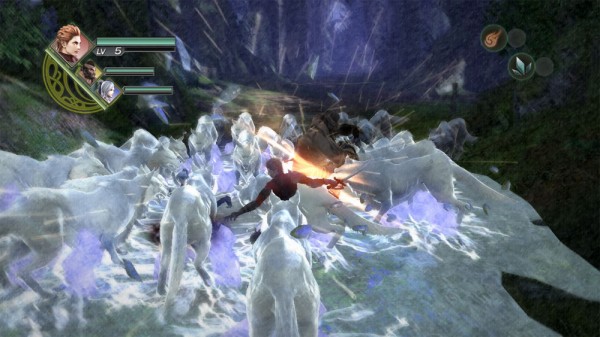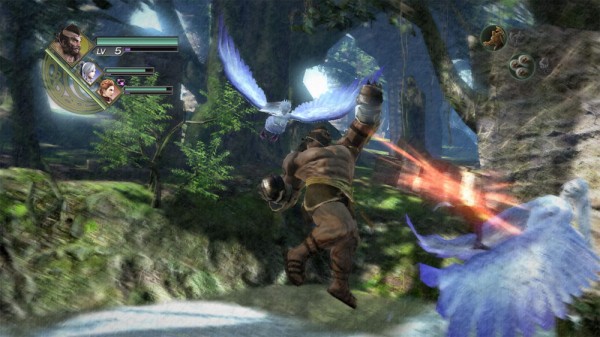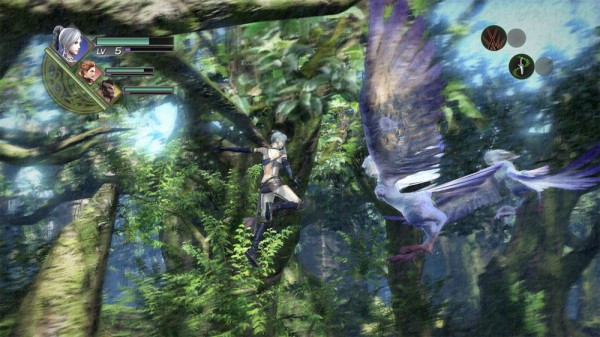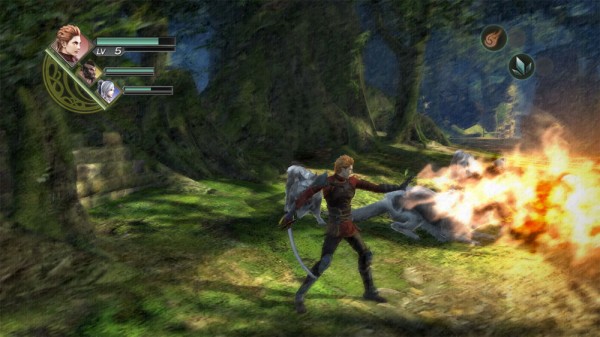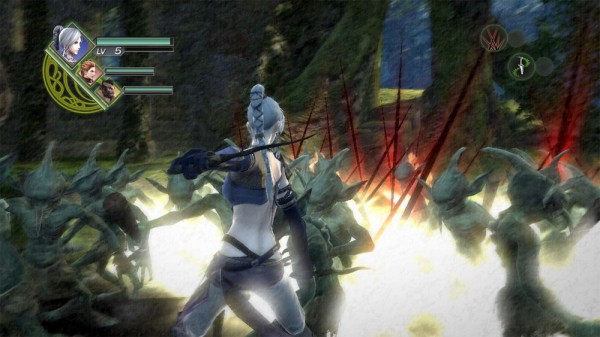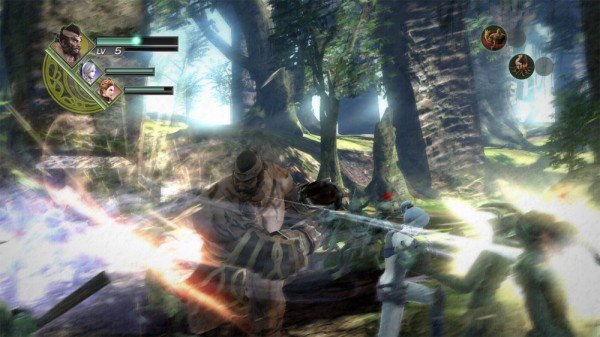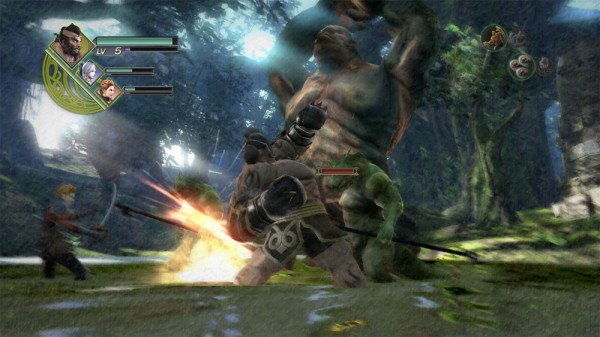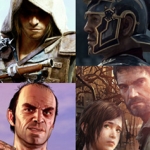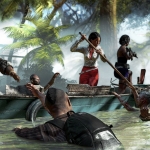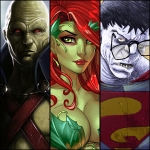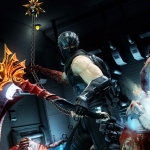
Koei is known for their Dynasty Warriors games and the spinoffs from the main franchise, all of which tend to look and play similarly to each other, often in different settings and with slightly different mechanics or themes. As a longtime Dynasty Warriors player, I was intrigued when I heard about Trinity: Souls of Zill O’ll, a new roleplaying game from the developers. How would the Dynasty Warriors formula fit into a deeper RPG experience? Let’s take a look.
Trinity: Souls of Zill O’ll is an epic fantasy game in the vein of any number of classic Japanese roleplaying games. The game opens with a cruel king, hungry to maintain his power, lashing out at his own family. A prophecy tells that his offspring will kill him, so he slaughters his own son on the battlefield. Narrowly escaping death is the king’s half-elven grandson, Areus, whose mother takes him away from the conflict to be raised away from his birth kingdom. Areus takes center stage fairly quickly, and we see that he has grown up training as a swordsman and has become a popular gladiator. In addition to his swordplay, Areus is adept at certain types of magic use, flinging fireballs and ice storms at his foes.
Having gained the respect of his trainers, Areus is on the verge of venturing outside his home city of Liberdam to pursue more fame and fortune performing quests for the local Adventurer’s Guild. That is where we join him and guide him through a lengthy series of early quests that serves as an adequate introduction to Trinity and its gameplay systems. As with prior games from Koei, combat is everything. Surprisingly, the fighting in Trinity feels distinct from that of Dynasty Warriors, though. There’s a wider range of attacks and options here, and there actually is quite a bit of strategy that goes into slaying particular types of foes. While the fun of Dynasty Warriors‘ combat comes from battling legions of foes, Trinity‘s combat becomes interesting from the need to experiment and figure out what kinds of attacks and timings are best to use against various types of enemies. You’ll still fight waves of bad guys, but they feel unique and demanding each time.
Eventually Areus will team up with the brutish Dagda and the female assassin Selene, and the range of strategies and options triples. You can switch back and forth between characters on the fly, whether you’re running around a dungeon or are in the midst of a heated battle. Each character has an individual fighting style that lends itself to new powers that unlock as you progress through the story. As you level up, your base stats will progress themselves, so the only decision making surrounds how best to level up each of those powers. You increase the powers’ potency by pouring experience points into them, making progression a somewhat shallower experience than in other RPGs. The focus of Trinity is unabashedly on fast paced combat, though, so not stopping to ponder a lot of stat modifications serves the game’s pace.
When I say the focus is on combat, I mean it. The game is long and detailed and has a lot of quests you can pursue, but it all comes back to the combat. There’s really not much else to do in the game aside from killing things, leveling up, and killing bigger things. Visits to the towns and settlements of the fantasy world are pretty bland, consisting only of series of menus. You’ll interact with the shopkeepers, quest givers, and everyone else entirely through your menu selections before your current quest spits you back out onto the world map, from which you’ll go into a new area to do more fighting. Nearly all the story progression and dialogue happens through static text conversations that has still drawings of two characters on the screen with their text appearing underneath. It feels pretty retro and causes the story itself to be less immersive than it might otherwise have been. You will run across animated cutscenes every once in a while, but they’re somewhat sporadic and don’t really fill the story void.
All of that sounds somewhat negative, but honestly you don’t need to pay much attention to the story. Plowing through the early bad guys and getting beaten down by the later ones is enough to keep you motivated through the game, and story and setting end up being somewhat ancillary. Make no mistake: fighting in Trinity is a lot of fun. Whether you’re roasting ten goblins at a time with your flame spells or trying to time your hit on that stubborn basilisk at just the right instant, there’s enough going on to really make you think and plan while you run around and dish out punishment. Fighting and looting easily will eat hours of your life.
The art in Trinity bears mentioning for its new and beautiful style. The art team calls the graphic style “Tablo,” which is their name for a moving oil painting. The effect is really cool and engaging, leading to some hazy and crosshatched art that sets Trinity above many other RPGs that opt for traditional rendering or even cel shading. The artistic visuals are very different from Ubisoft’s 2008 Prince of Persia, but I can’t help but draw parallels between the two games in their artistry and intent. Even the still dialogue segments and world maps look good and unlike other games.
My only real complaint about Trinity is with its camera and “lock on” system. Most games that allow you to lock onto an enemy will select that enemy for attack and then have the camera focus on that bad guy while your character strafes around the enemy and attacks. Not so, here. I’m still kind of unclear as to what locking onto someone does for me, even after playing many hours of the game. It does select the bad guy, but there’s no visual focus or strafing, and sometimes the lock on just goes away after a few seconds. Maybe I’m just slow on the uptake, but I can’t figure out a way to effectively use the lock. A related complaint is about the camera in general. You’ll be running afoul of lots of enemies at once throughout the game, and you’ll often hop between your three characters, so it would be useful to have a wide view of the battlefield. Unfortunately the camera spends most of the time zoomed in too closely on the action, making it hard to swivel quickly and see what you’re attacking. I did get a feel for the camera after a while, so that ended up just being an annoyance and not a game breaker.
If you’re itching for a long roleplaying experience that is heavy on the combat and fighting strategy, Trinity: Souls of Zill O’ll just might fit the bill. It’s made by the folks behind Dynasty Warriors but really doesn’t feel much like those games. It sports a unique looks and fun ways to go after the bad guys, and it’s well worth checking out.


